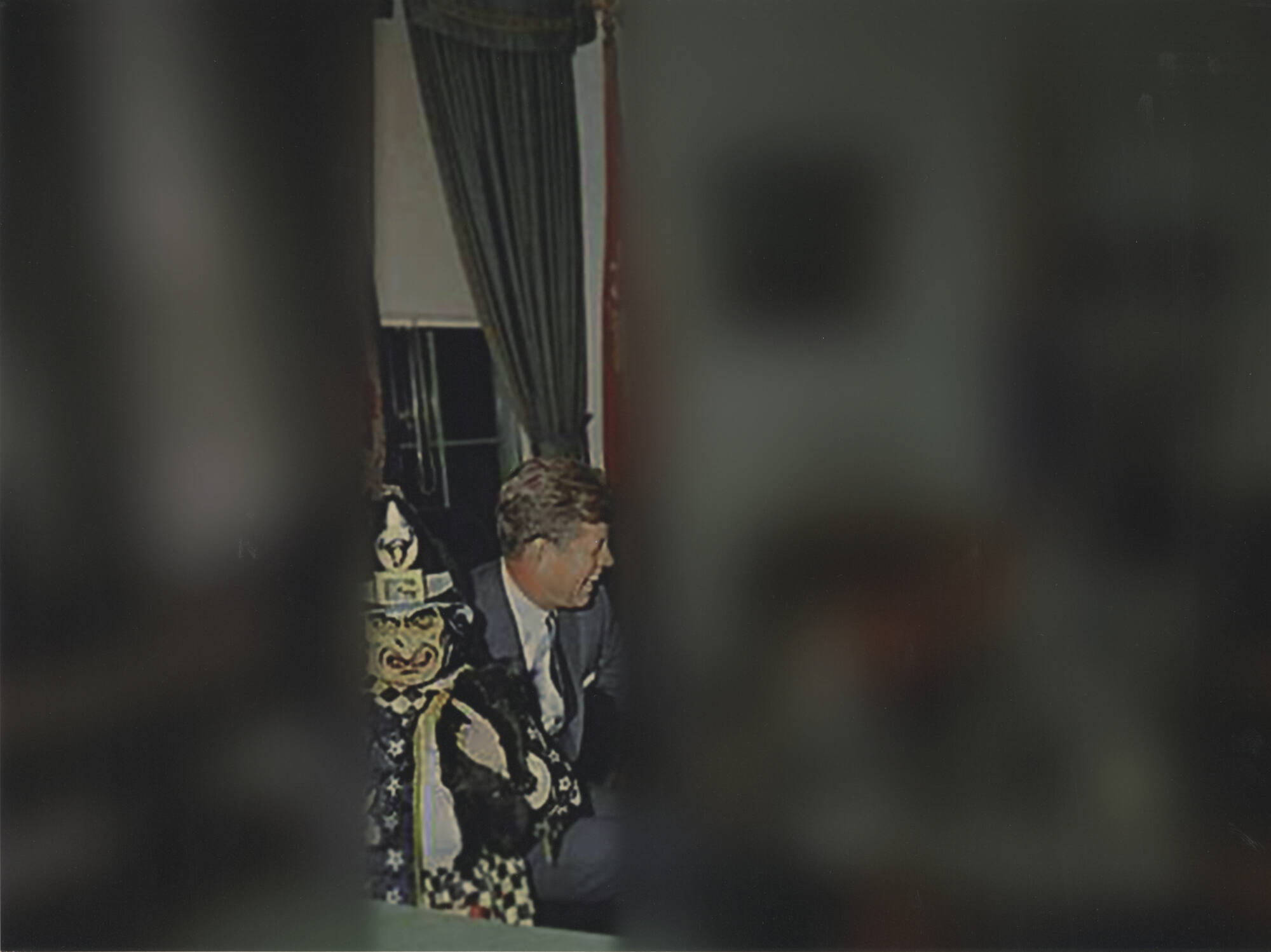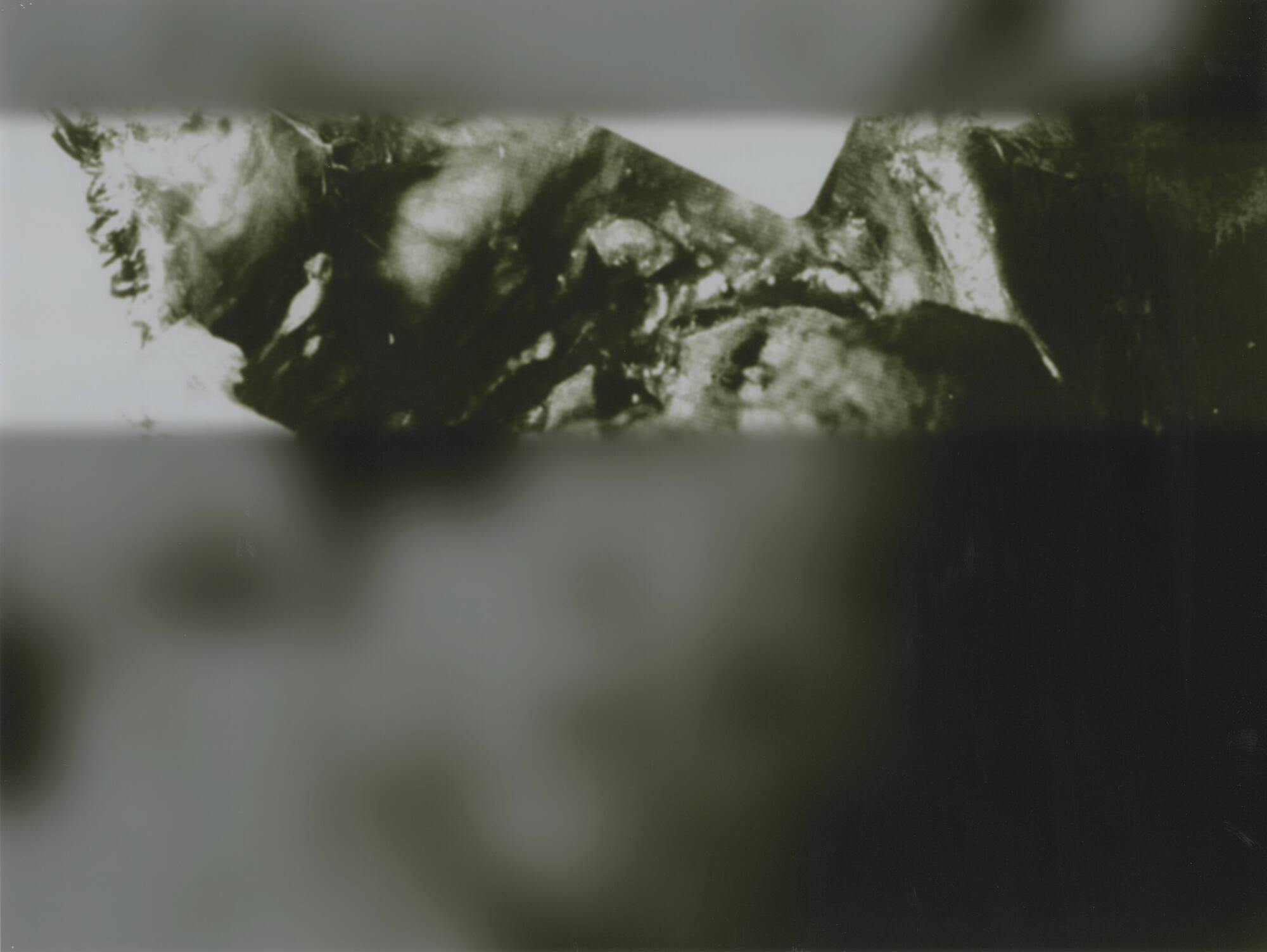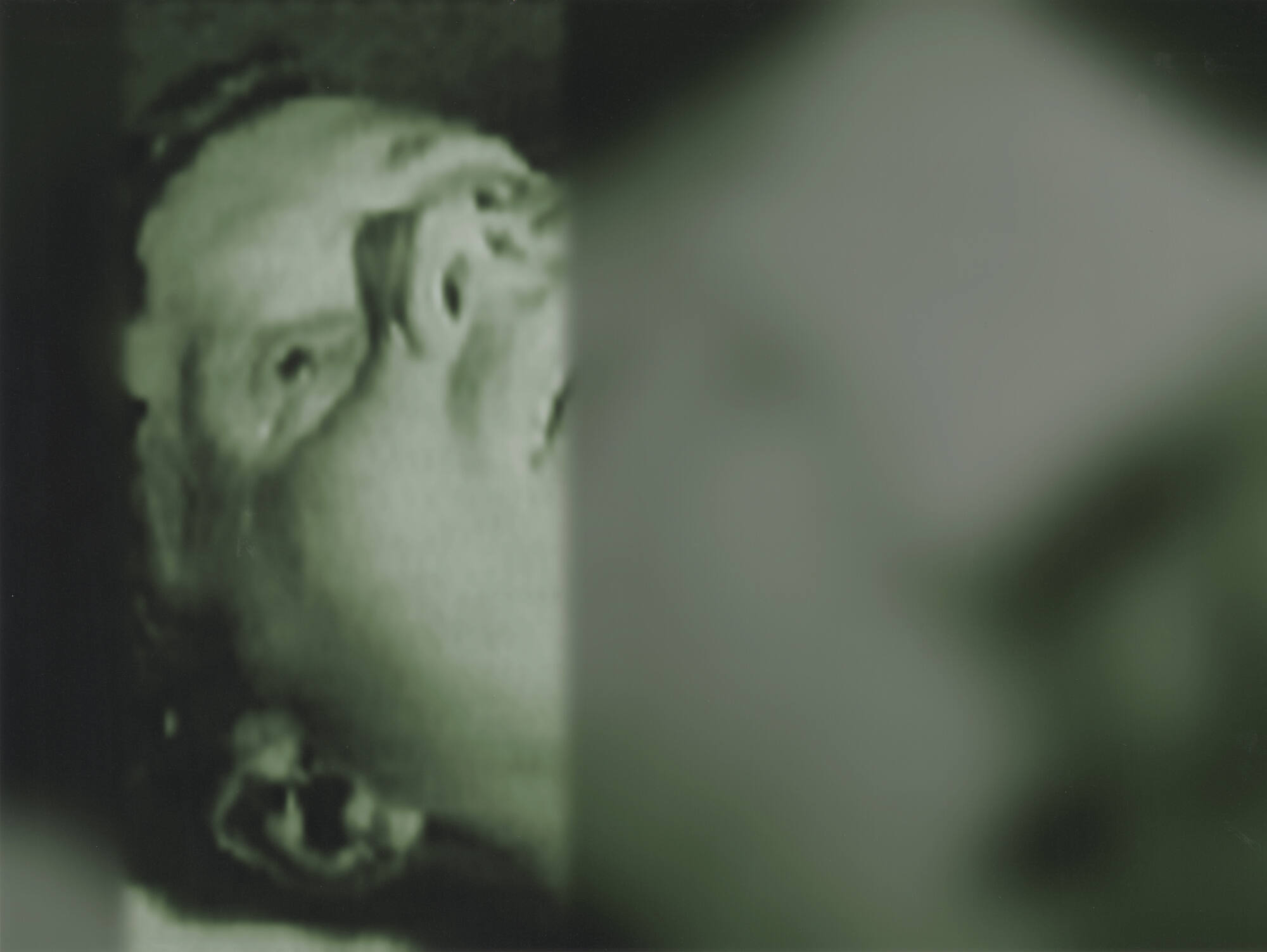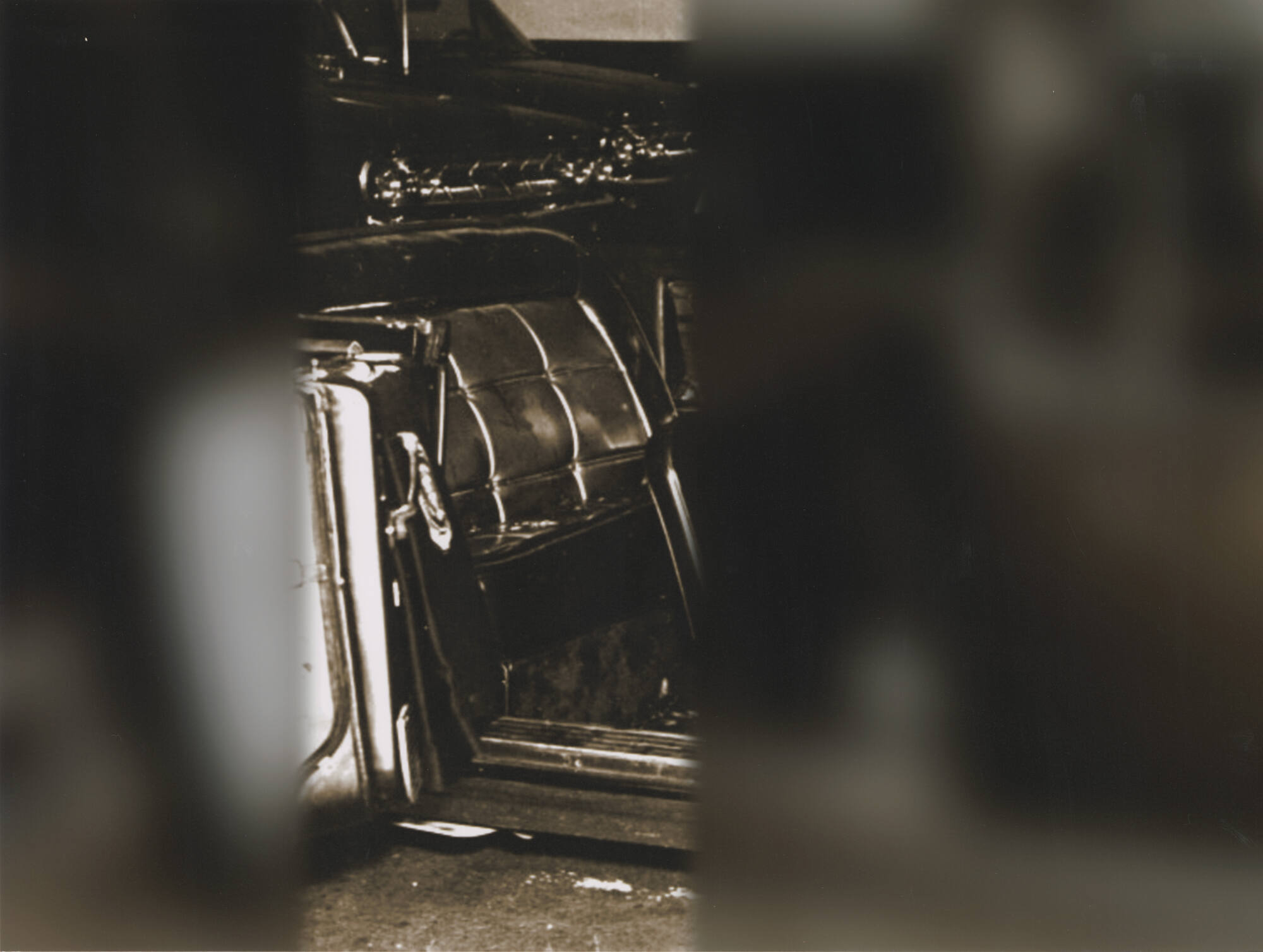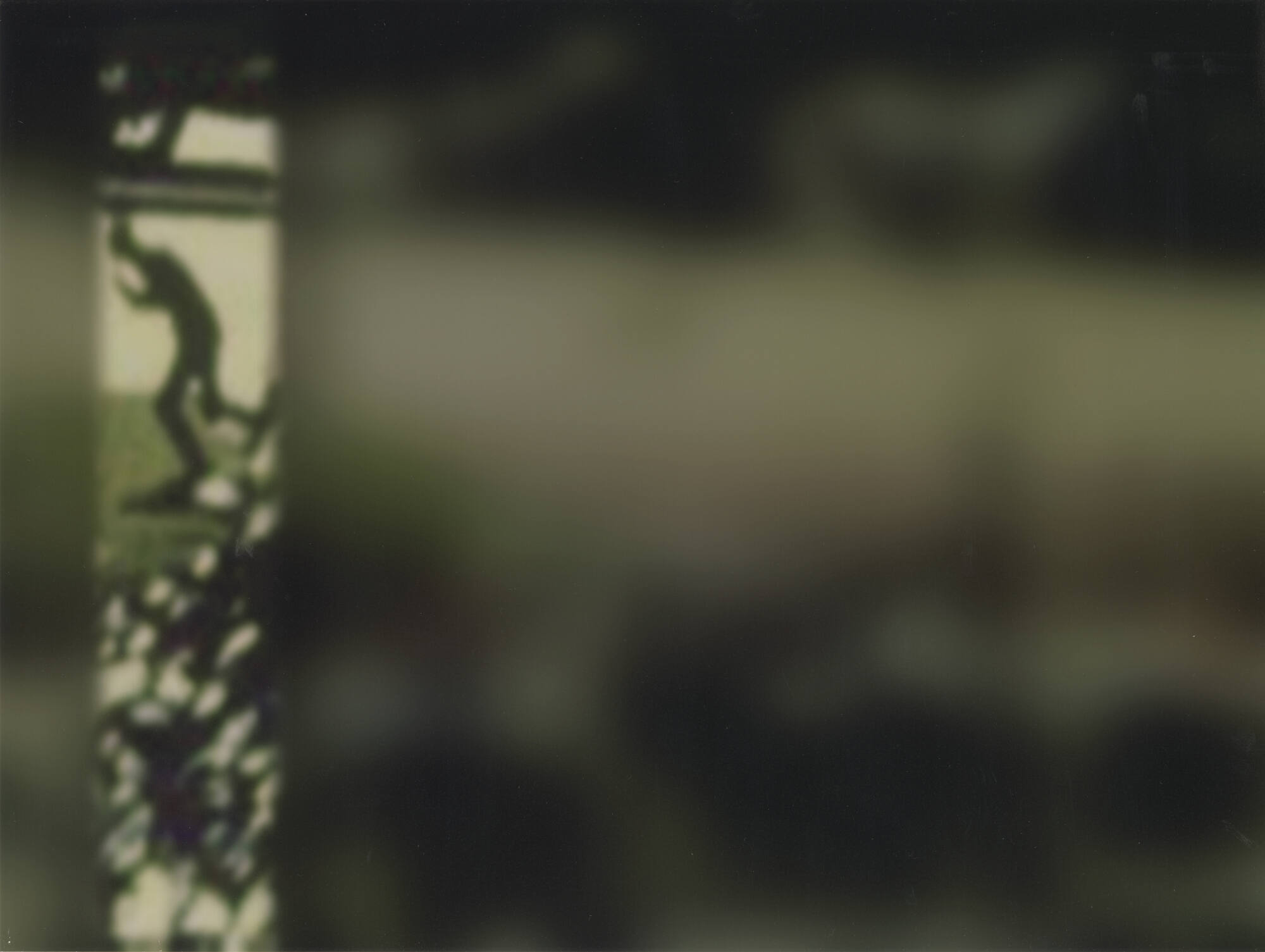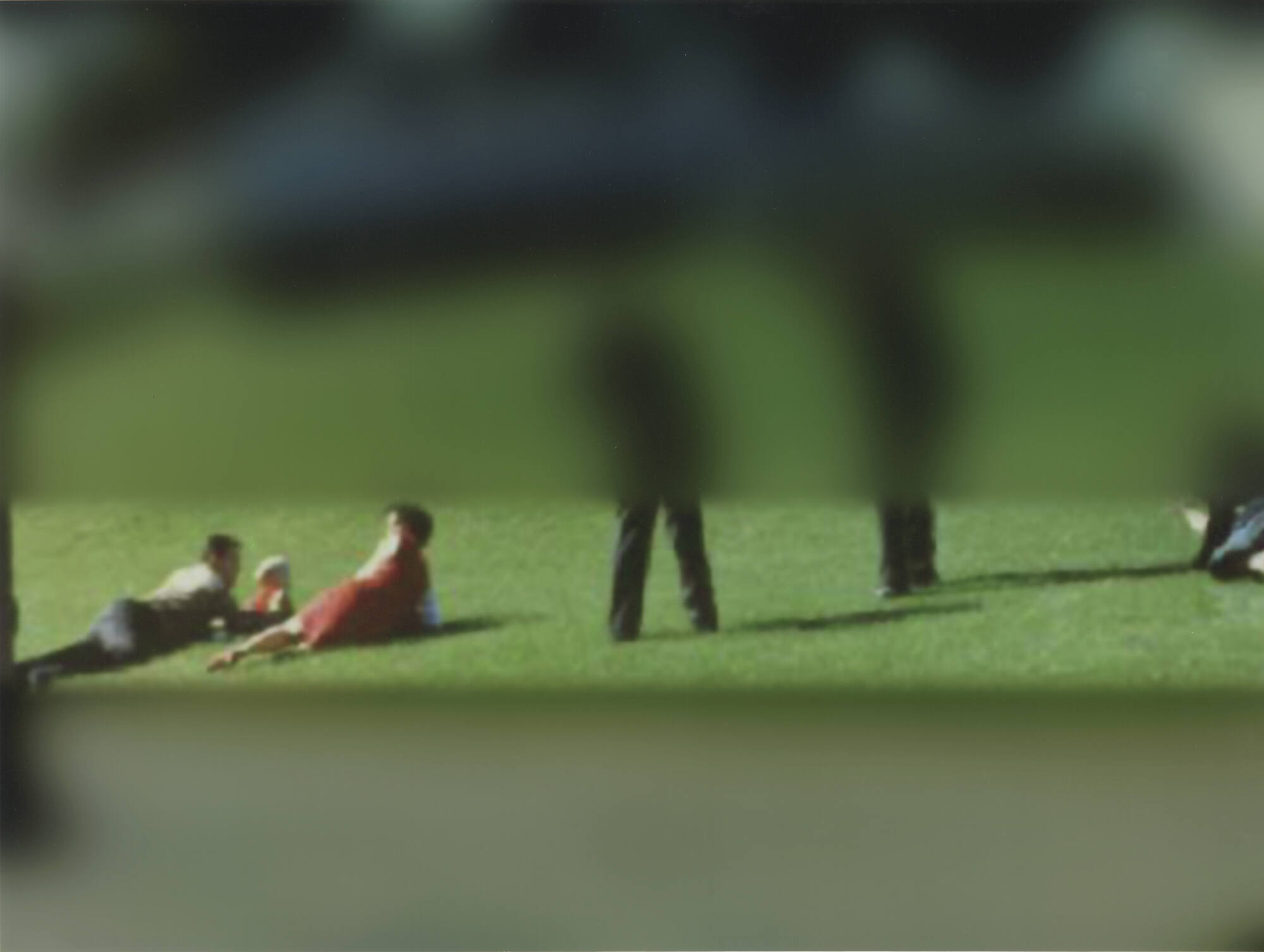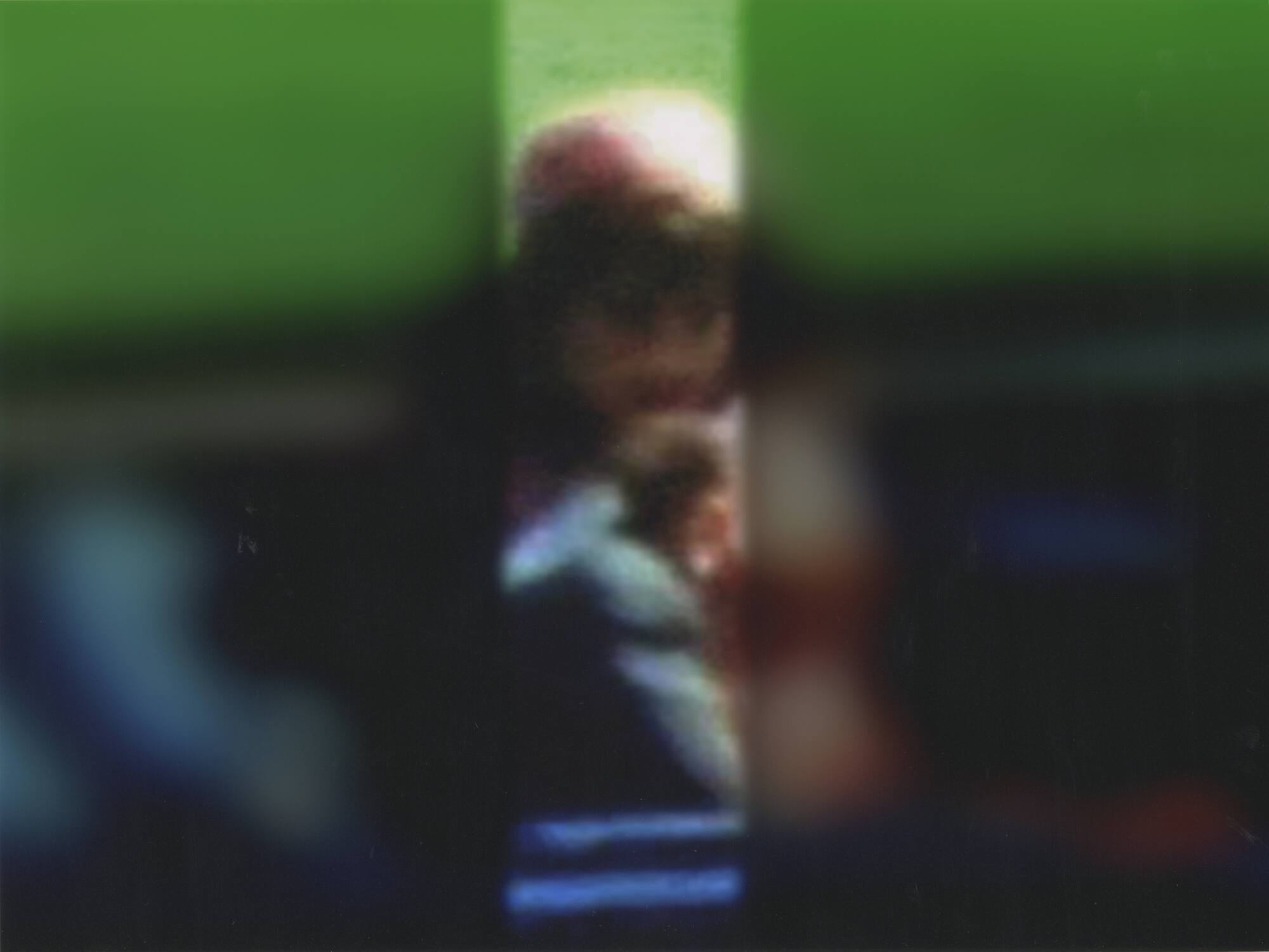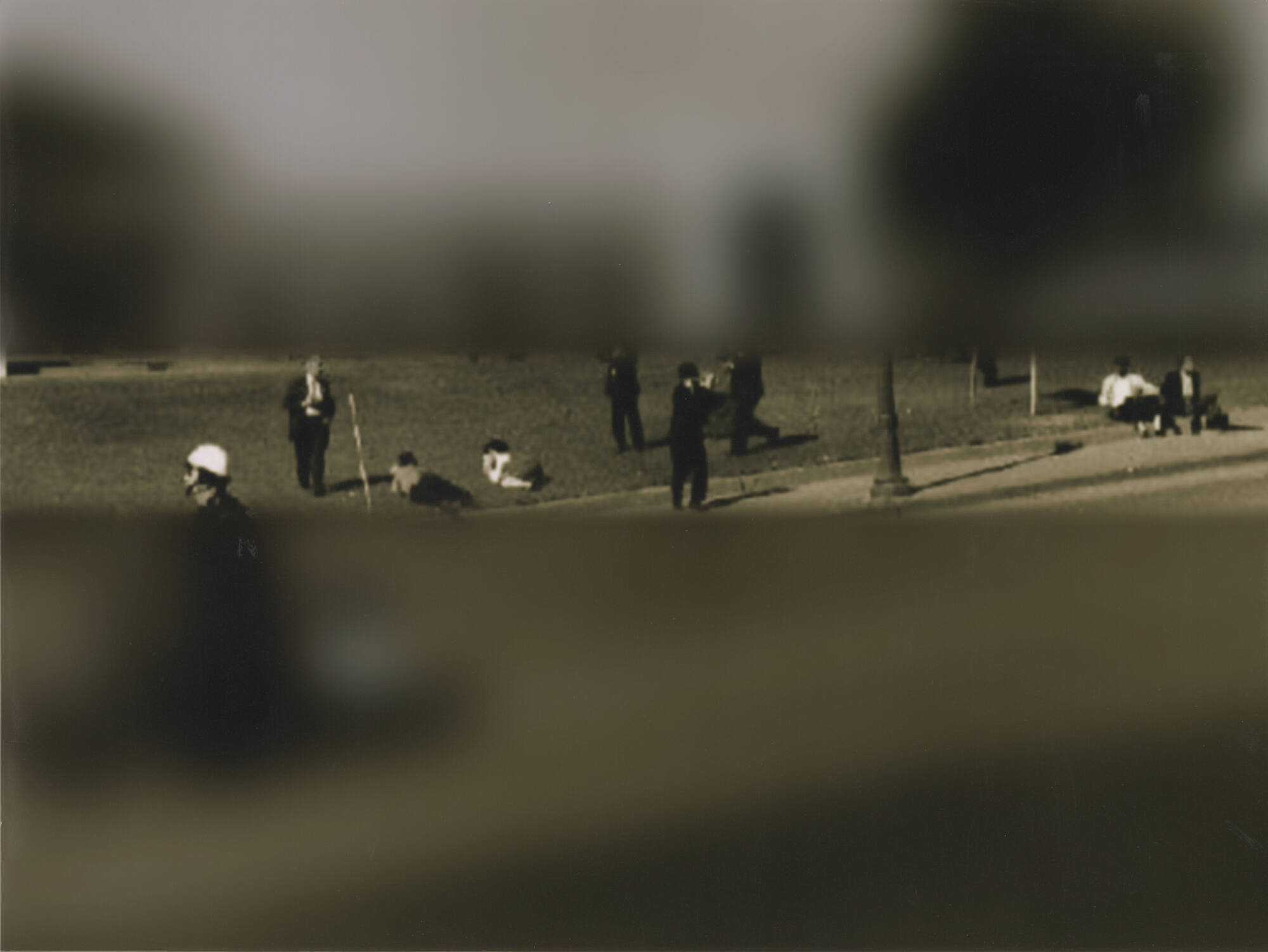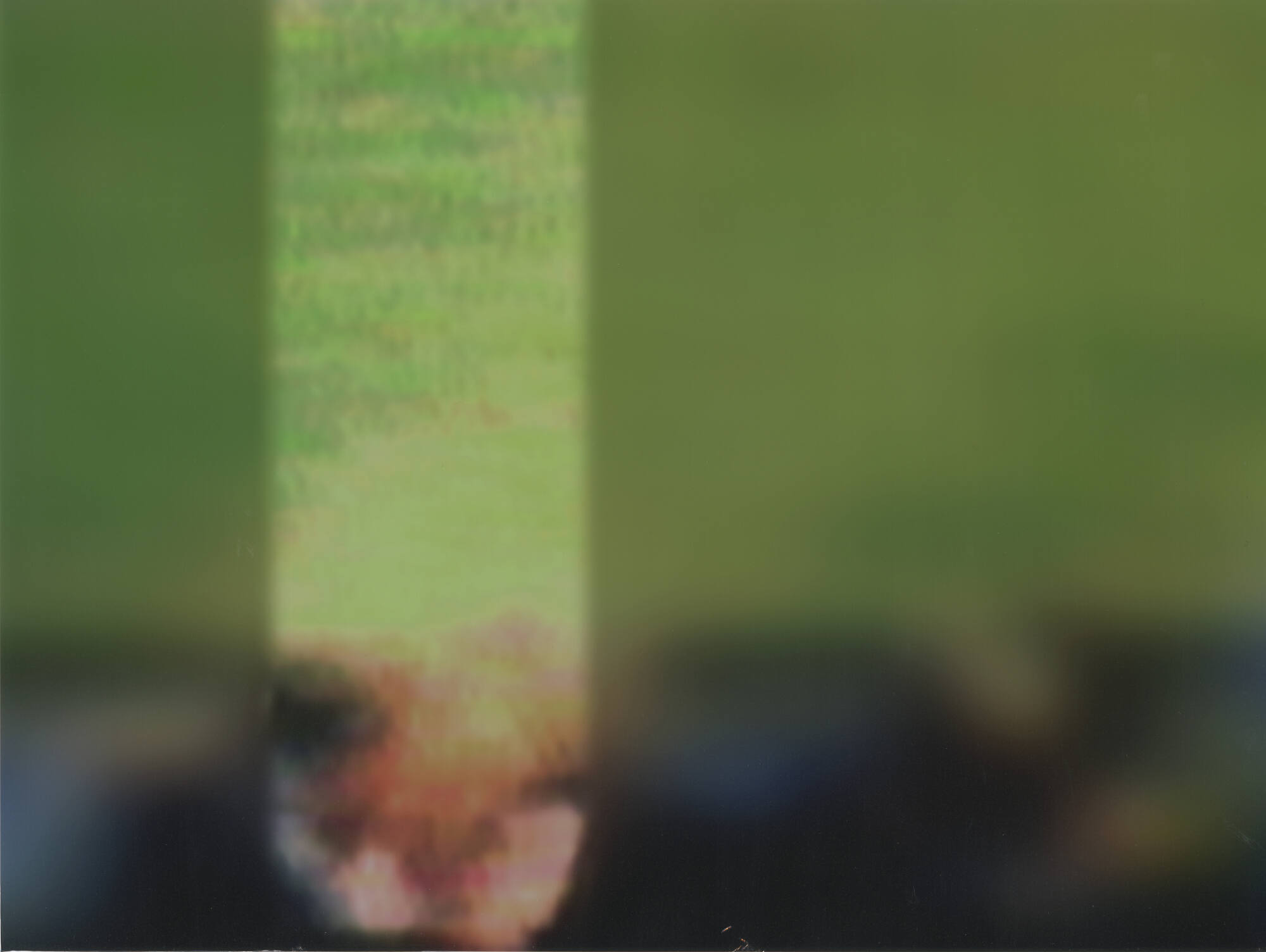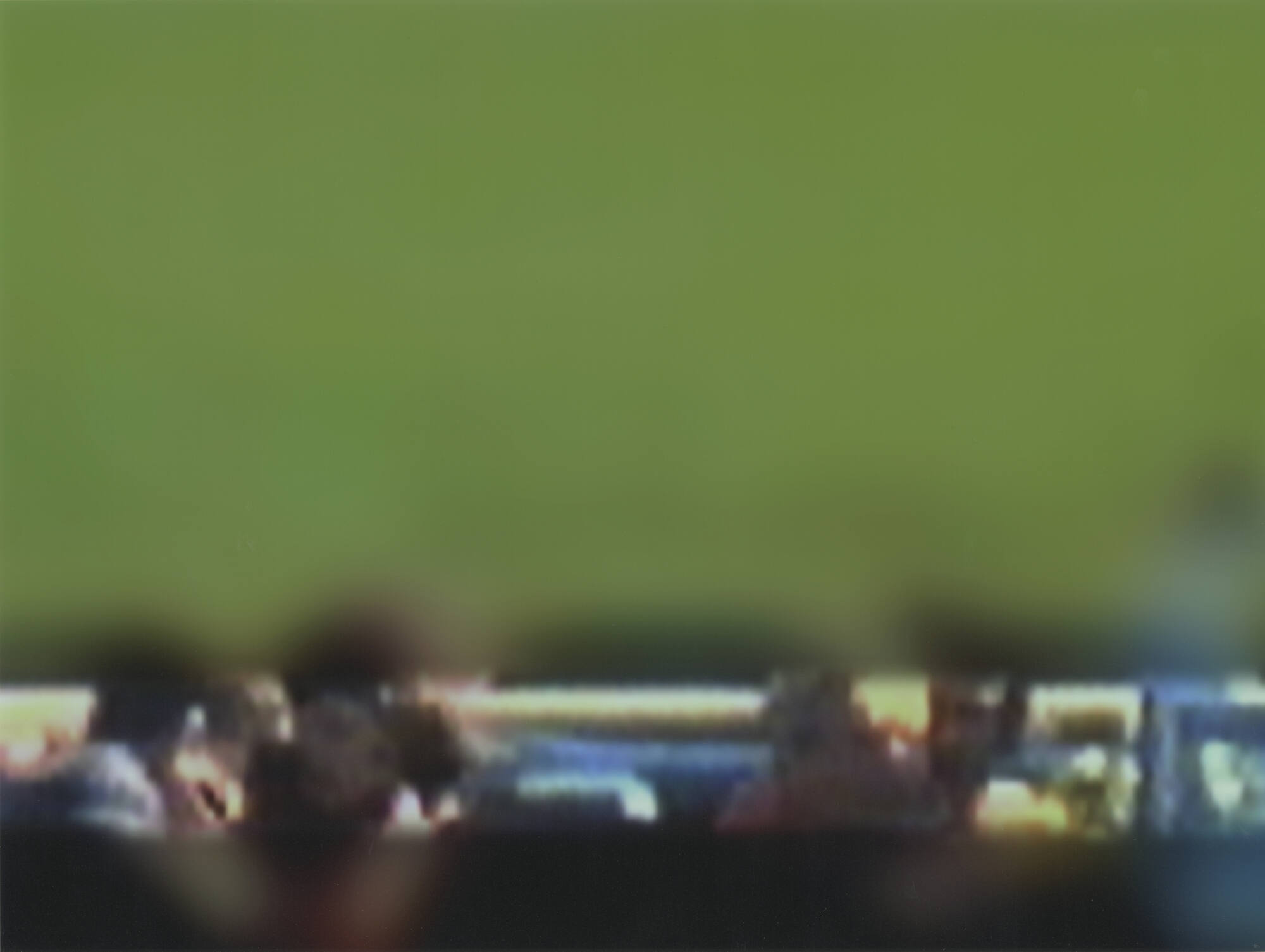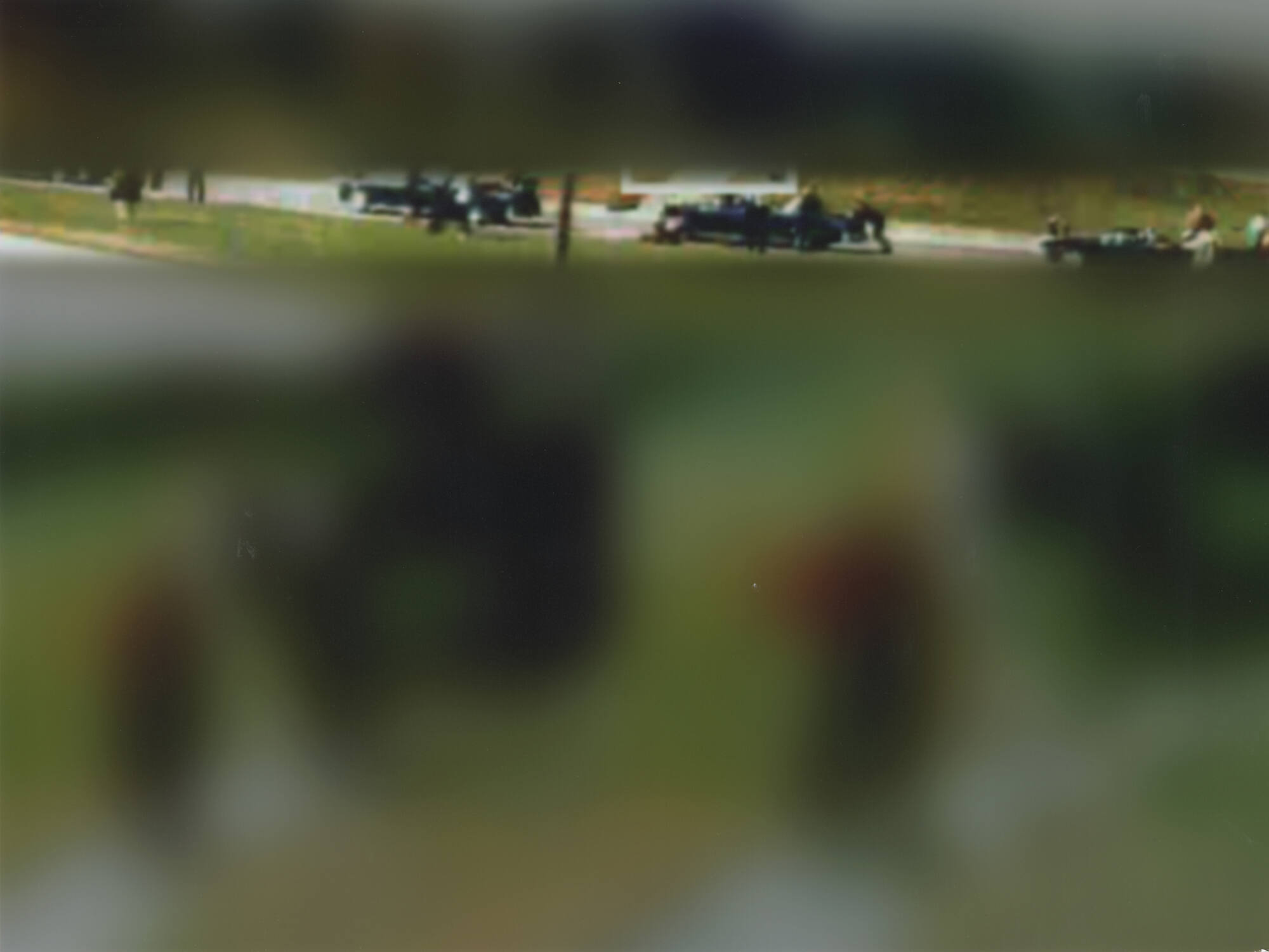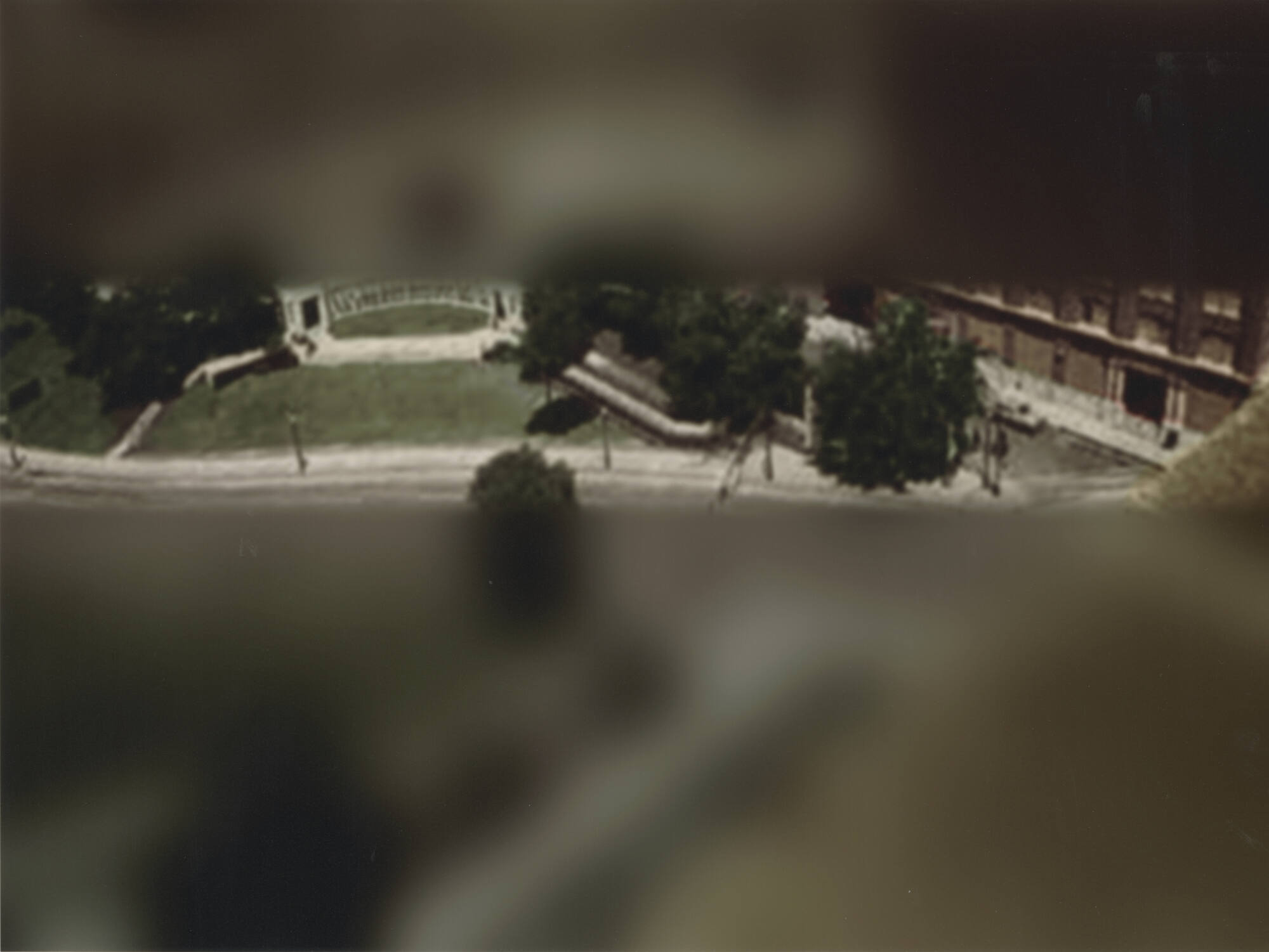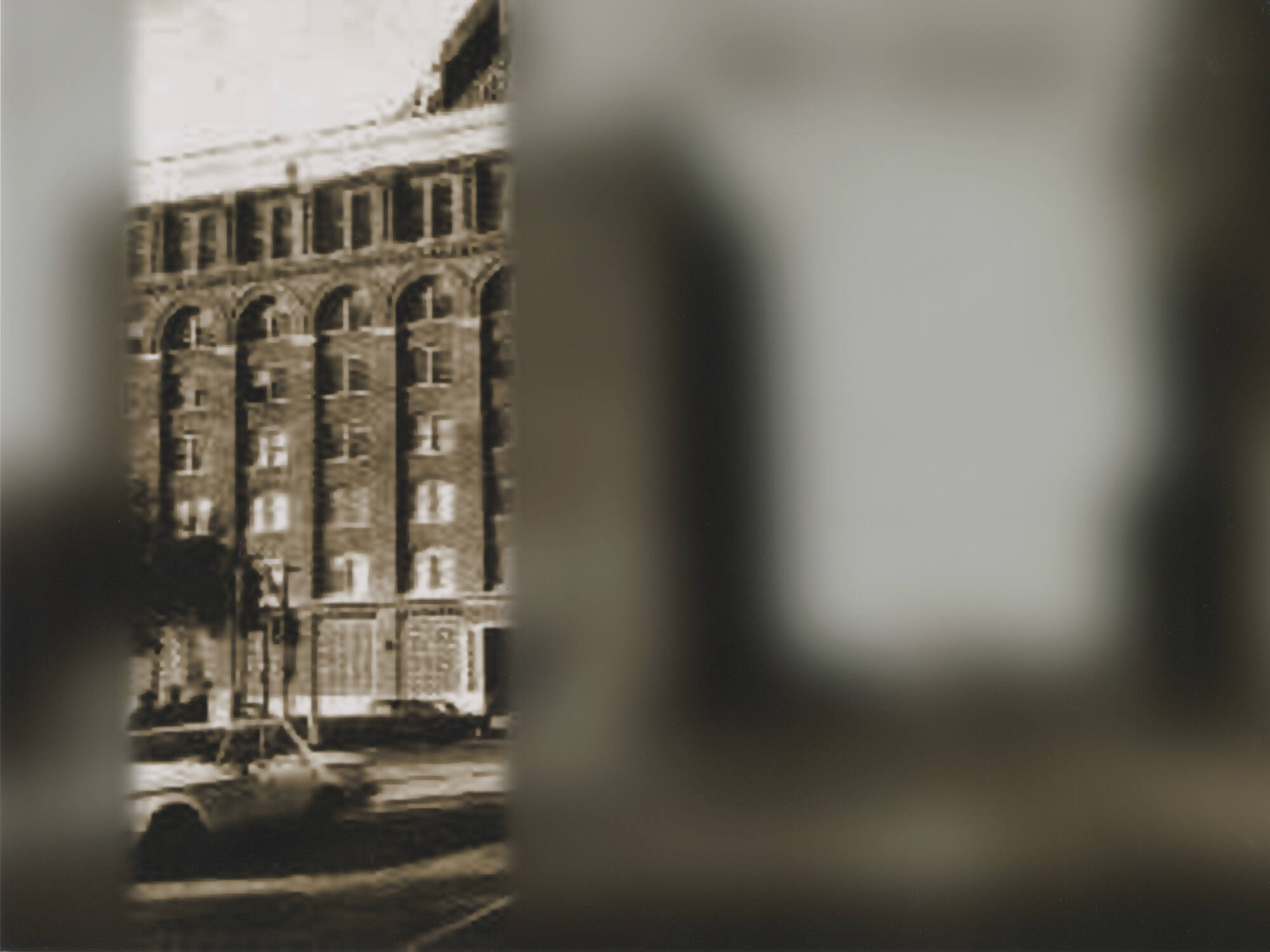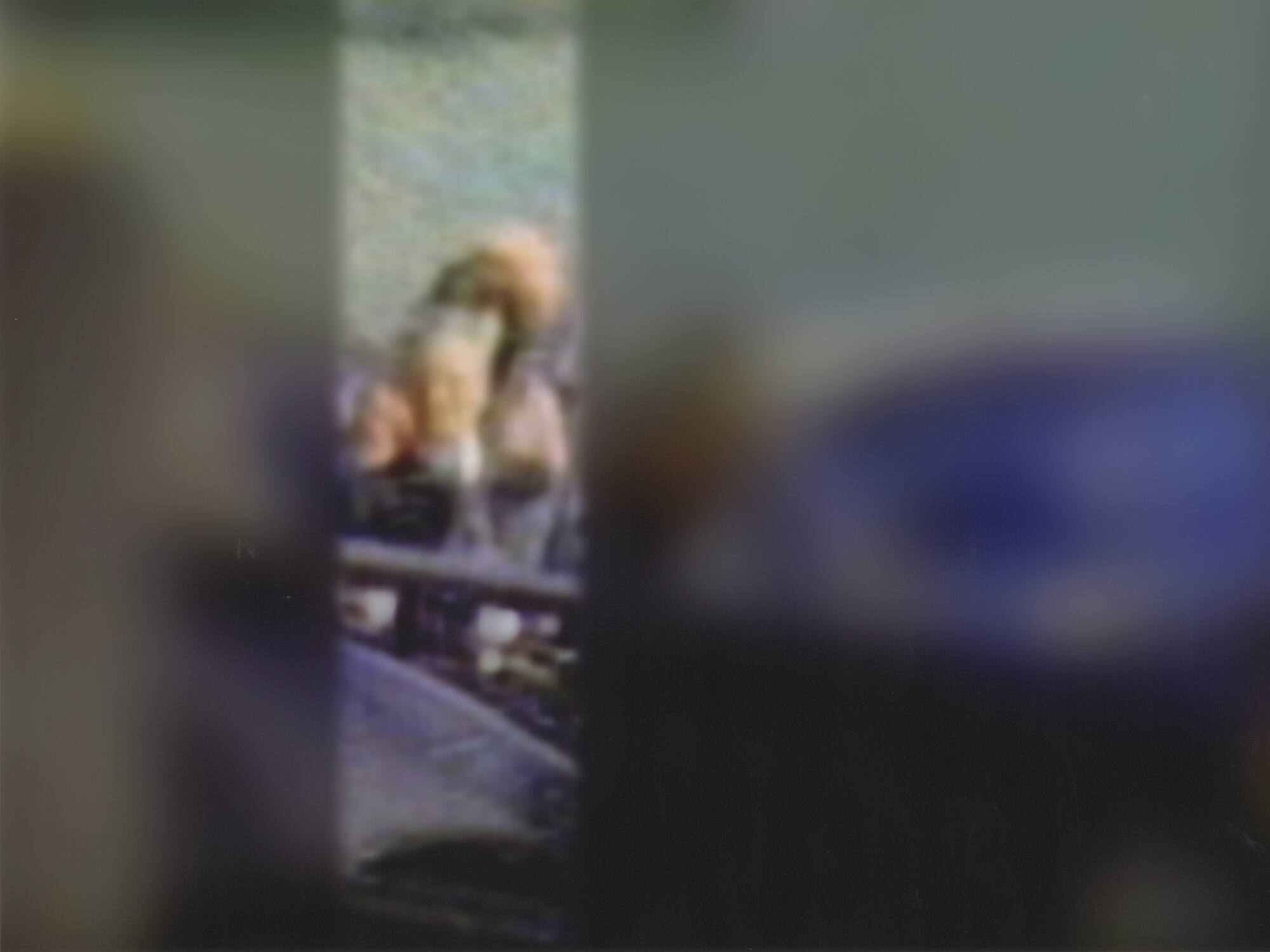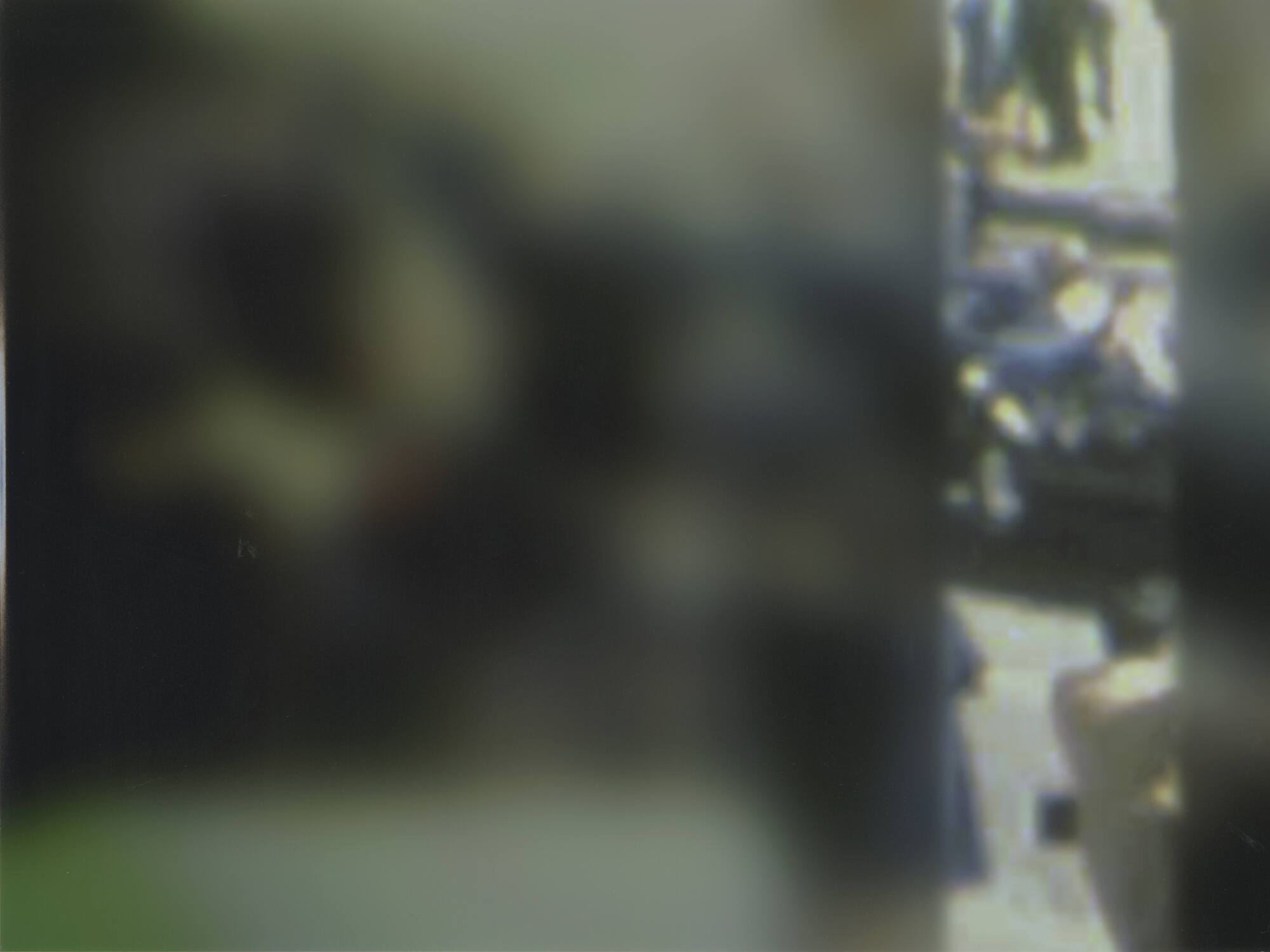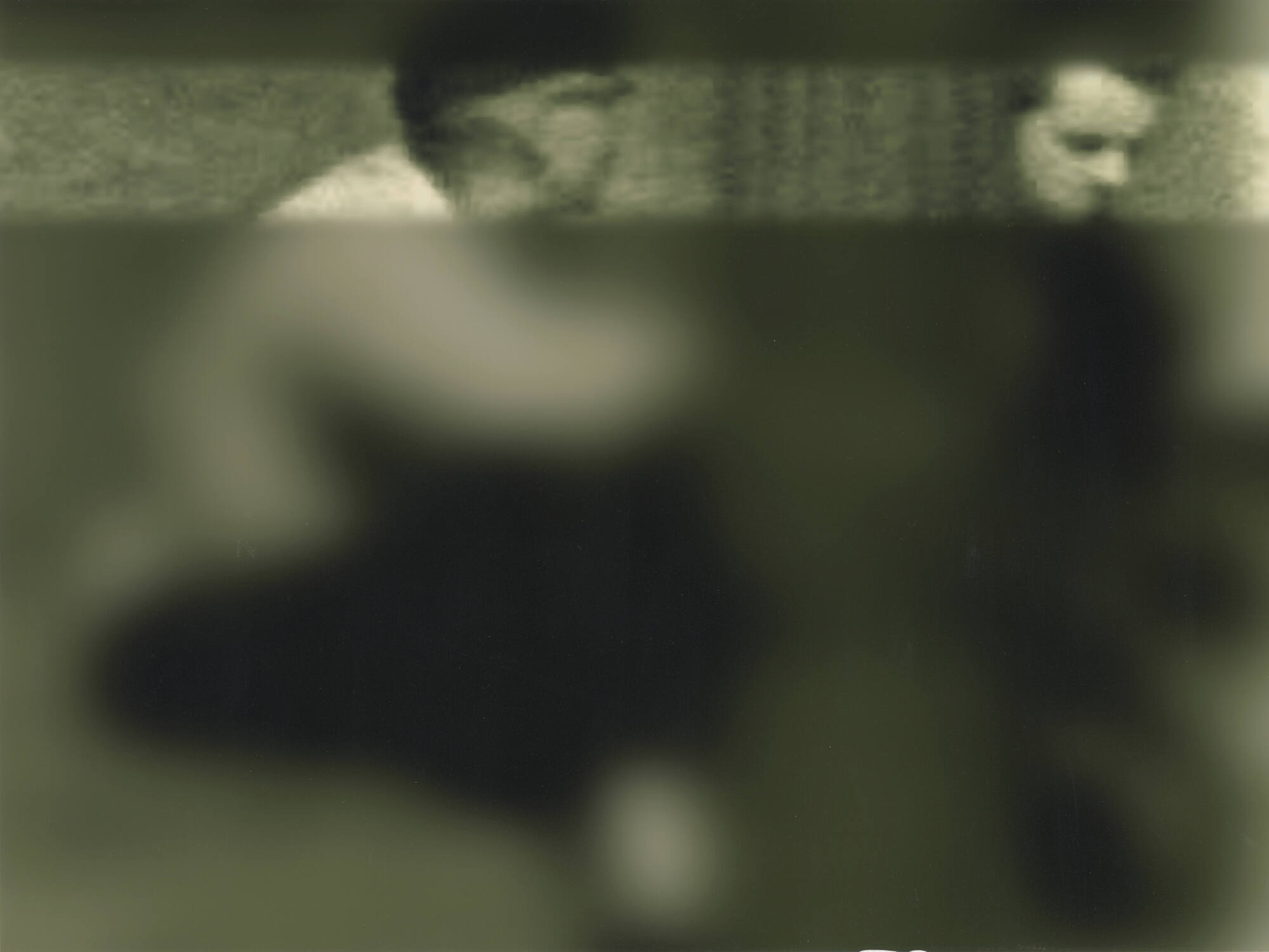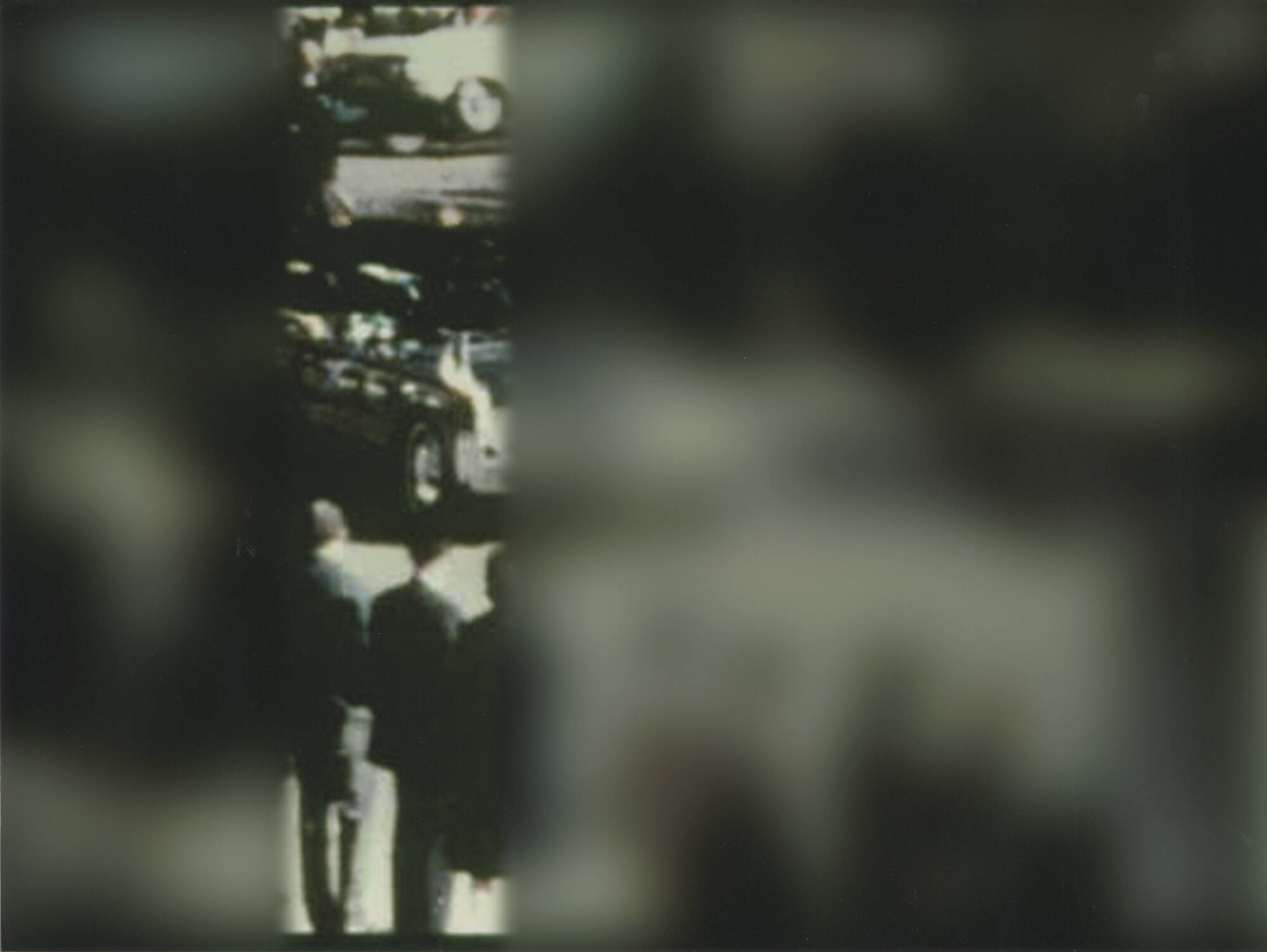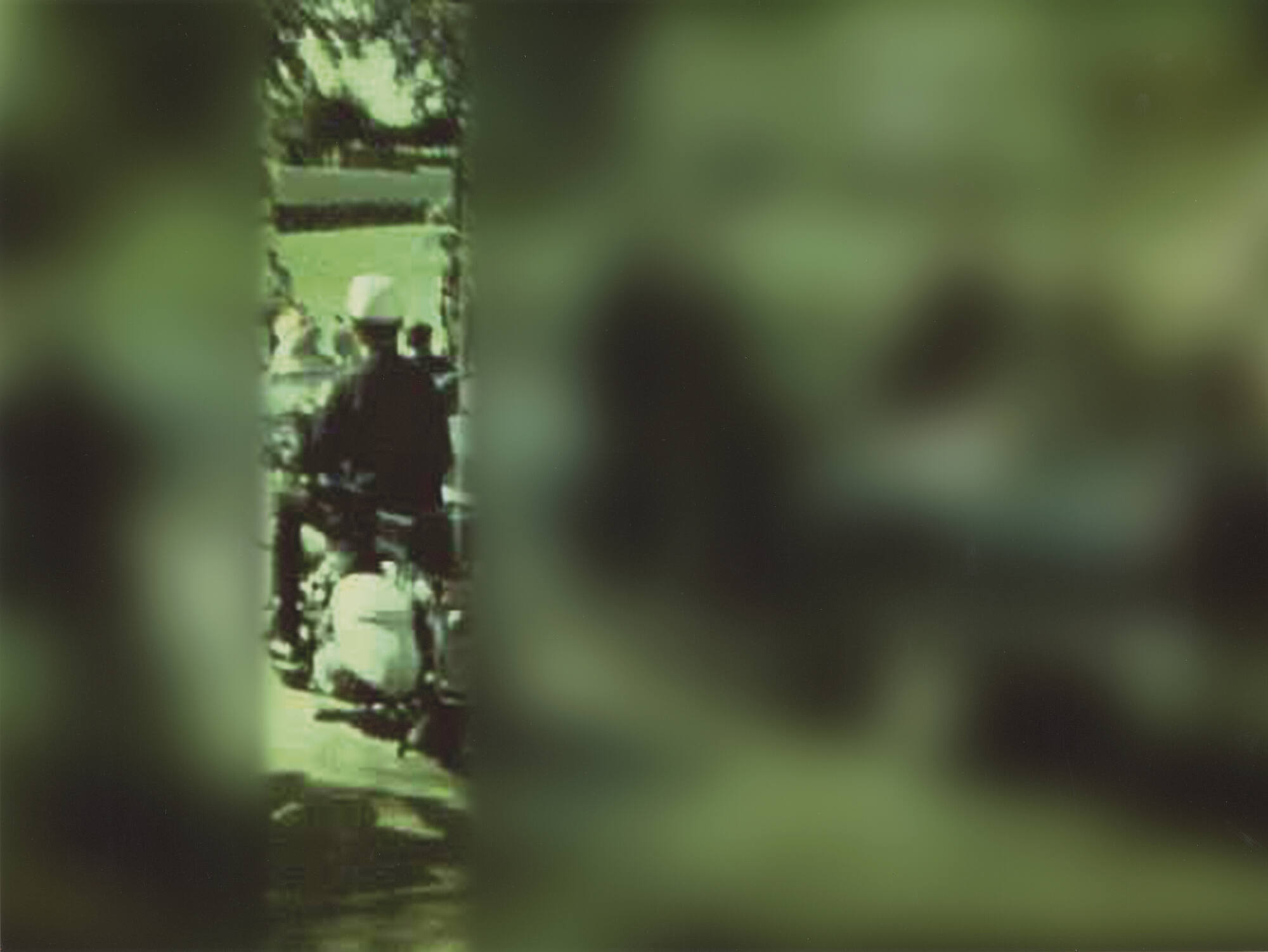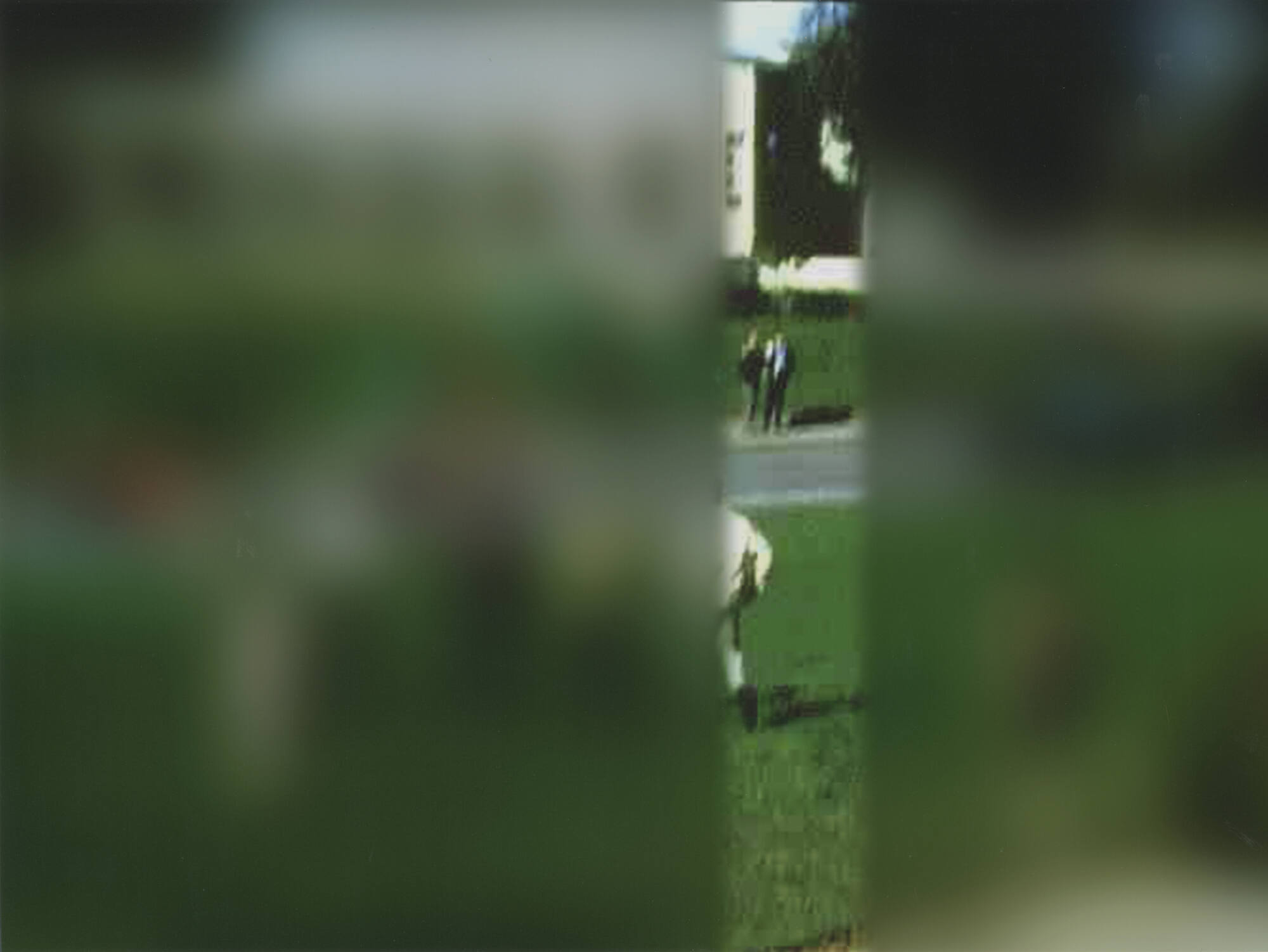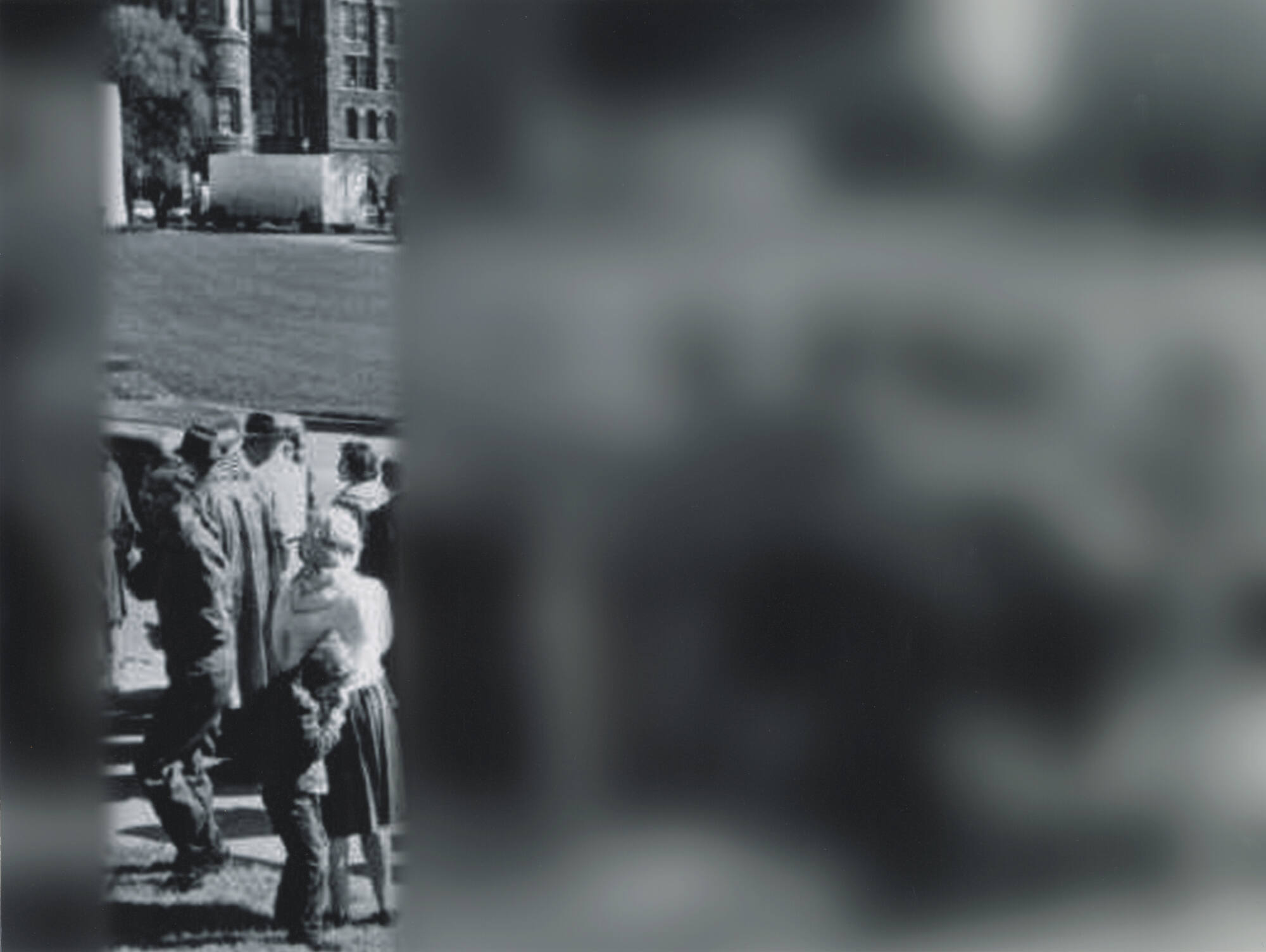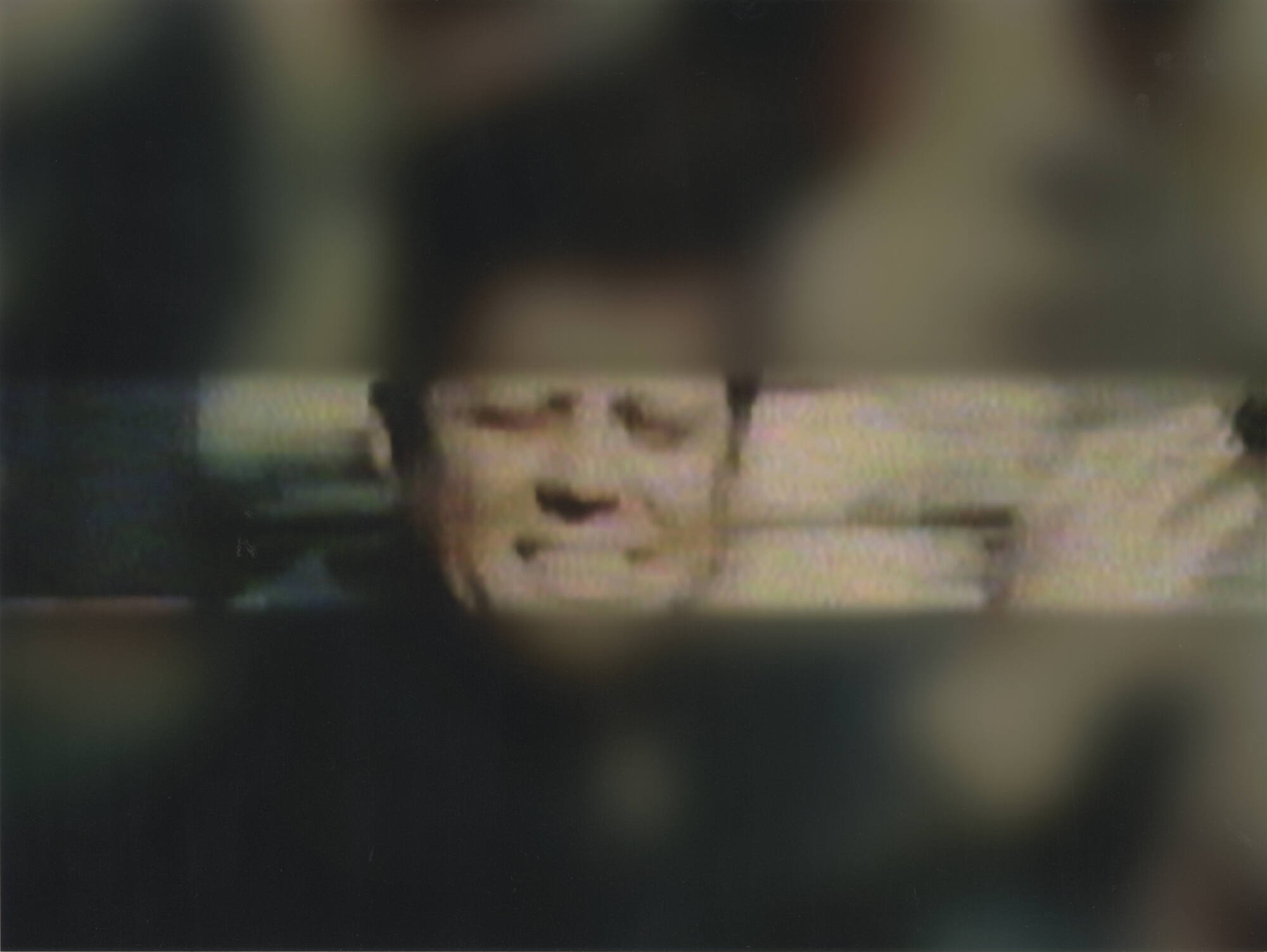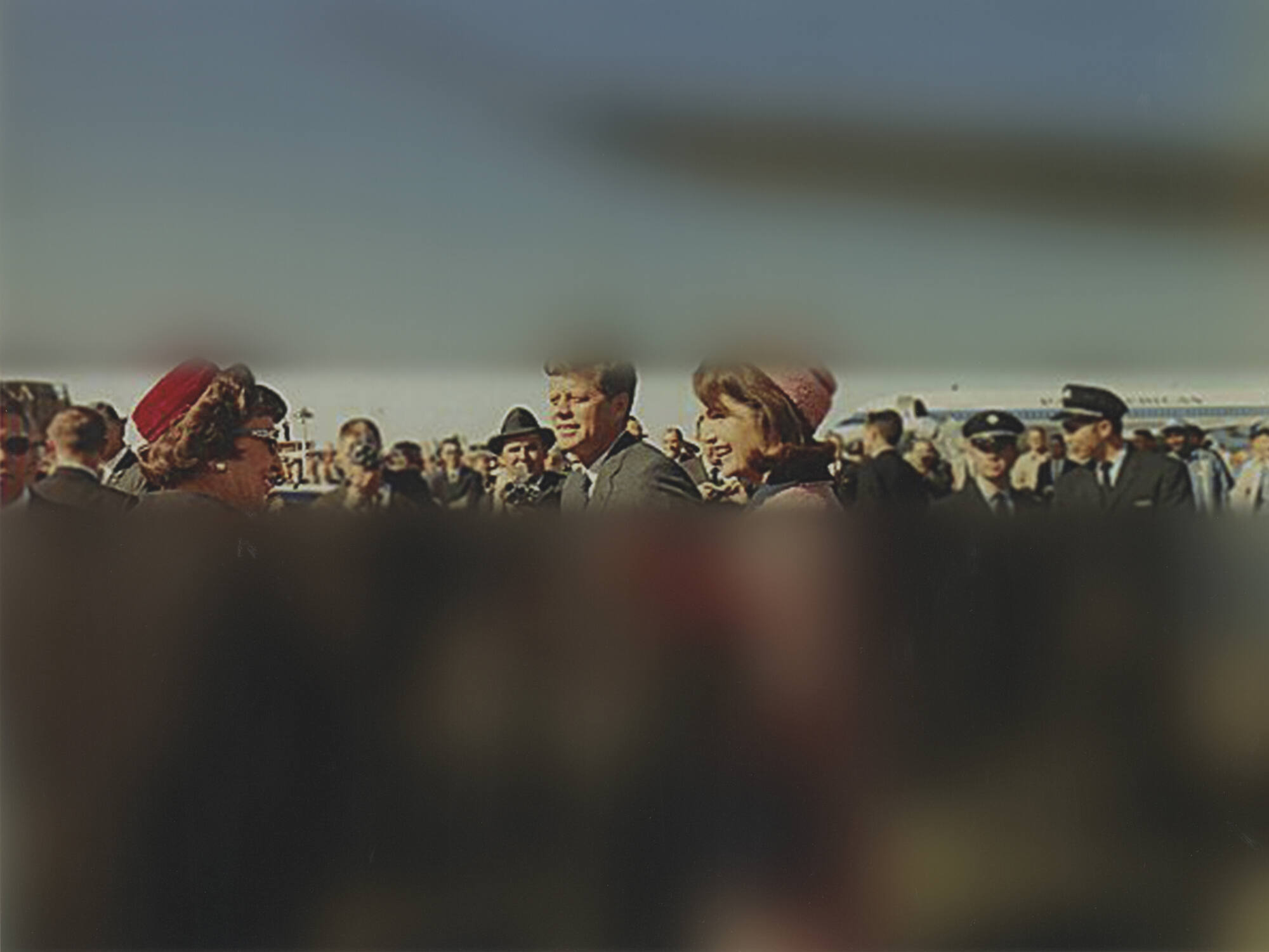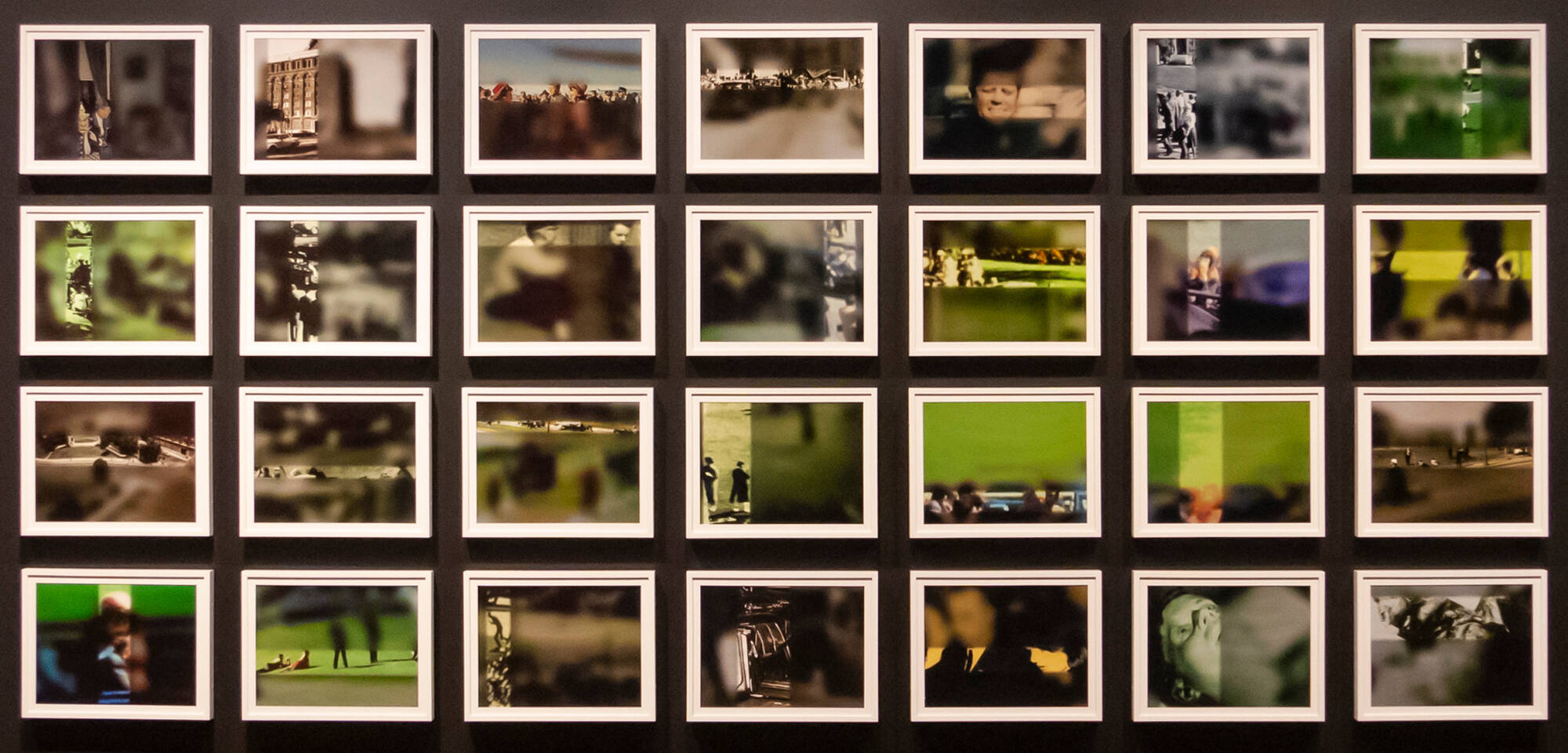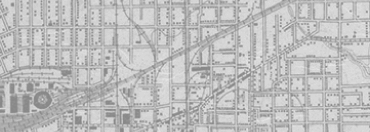


Back
"Conspiracy Theory #7: Dealey Plaza" photographic series by Piet Wessing
"Conspiracy Theory #7: Dealey Plaza" is a photographic series by German artist Piet Wessing that consists of 28 framed color photos. By using iconic photographs and video stills with the majority of their visual information obscured, Wessing creates a piece that tells the story of the Kennedy assassination in chronological sequence. But the hidden elements of Wessing’s work far outweigh the clear parts of the images, inspiring the viewer to question what he or she really sees or knows. According to Wessing, “The challenge of the whole project was how to visualize conspiracy theories without advocating them… The project presents multiple truths. [It] shows at the same time the whole range from the obvious fake to the probably real, and offers the spectator (who sometimes becomes even an accomplice) the unsettling choice to either believe or to be skeptical towards the depiction – and thereby their own reality. A choice that is made as difficult as possible.”
"Conspiracy Theory #7: Dealey Plaza" photographic series by Piet Wessing
1999
Paper, Photo
11 13/16 × 15 11/16 in. (30 × 39.8 cm)in original frames: 12 1/8 × 16 1/8 in. (30.8 × 41 cm)
Kay Y. Moran Collection/The Sixth Floor Museum at Dealey Plaza
2010.044.0001
Exhibit Label: Born in Münster, West Germany, Wessing grew up during the Cold War, when President Kennedy was an iconic personality for Wessing and many of his generation. Wessing recalls watching the moon landing in 1969, which he associated with Kennedy, and seeing representations of Kennedy in artworks by Robert Rauschenberg, whom he admired. In the 1990s, Wessing created works that used images of Kennedy to evoke leadership or tragedy and experimented with different ways to create paranoia and an awareness of conspiracy in his viewers. After some time studying music and performing in bands, Wessing moved on to other forms of creative expression, including photography, video and media installations. Today his works are represented in museums and galleries in France, Germany, Spain and the United States. (Special exhibit, "Art Reframes History," on view on the Museum's seventh floor from September 9, 2020 through May 9, 2021)
German artist Piet Wessing selected a variety of amateur and professional still photographs and film frames to create "Conspiracy Theory #7: Dealey Plaza." Many of the original images used by Wessing are extreme close-ups or crops, colorized, reversed, composites or manipulated in various ways. Moving from left to right, source images for the top row are: a photograph of President Kennedy in the Oval Office on October 31, 1963, taken by White House photographer Cecil Stoughton; a Dallas Police Department photograph of the Texas School Book Depository; a photograph of President and Mrs. Kennedy at Dallas Love Field on November 22, 1963, taken by White House photographer Cecil Stoughton; an Associated Press photograph taken during the assassination by Ike Altgens; a frame from the compilation film, "President Kennedys Final Hour," produced by the Dallas Cinema Associates; a photograph by eyewitness Jim Murray of the aftermath in Dealey Plaza; and a photograph by eyewitness Charles Bronson taken at the beginning of the assassination. From left to right, source images for the second row are: a photograph by eyewitness Phil Willis taken at the beginning of the assassination; a frame (likely Z157) from the Abraham Zapruder film; a close-up of a detail from a Dealey Plaza photograph by Clint Grant of The Dallas Morning News; three additional frames from the Abraham Zapruder film (likely Z178, Z208 and Z224); and a close-up of a detail from a Dealey Plaza photograph taken by eyewitness Jim Towner. From left to right, source images for the third row are: a slightly manipulated photograph of Dealey Plaza taken from the roof of the Dallas County Records Building; a photograph taken during the assassination by eyewitness Mary Moorman; a backwards composite image made from multiple frames of the Orville Nix film; three additional frames from the Abraham Zapruder film (likely Z303, Z312 and Z313); and a reverse view of a Dealey Plaza photograph taken by eyewitness Richard Bothun. From left to right, source images for the fourth row are: a frame from the Abraham Zapruder film (likely Z333); a Dealey Plaza photograph showing eyewitnesses Bill and Gayle Newman, taken by White House photographer Cecil Stoughton; another Abraham Zapruder film frame (likely Z416); an FBI photograph of the presidential limousine inside the White House Garage on November 23, 1963; a photograph of the swearing-in of Lyndon Johnson aboard Air Force One in Dallas, taken by White House photographer Cecil Stoughton; and two U.S. government photographs taken during President Kennedy's autopsy at Bethesda Naval Medical Center in Maryland on November 22, 1963. -- Stephen Fagin, Curator
In a February 2020 e-mail exchange with Nicola Longford, CEO of The Sixth Floor Museum at Dealey Plaza, Piet Wessing shared his thoughts on President Kennedy. He wrote: "Growing up in the 60s in Germany, President Kennedy has always been an iconic personality for me, present in politics and culture as well. As a child I watched Apollo 11 live on TV, which has been his initiative. I saw images of him not only on TV or in magazines, but early on also in artworks by Robert Rauschenberg, whom I always admired, and many others. Very much later it has been Oliver Stone's JFK that sparked new interest, now focusing on the conspiracy theories about his assassination." On his inspiration for "Conspiracy Theory #7: Dealey Plaza," Wessing remembered, "I searched the internet of 1999 for images about him and expectedly the images were of quite poor quality. In order to visualize the difference between facts (the whole picture) and theories I chose only small parts of the images to be seen clearly, and even that parts have the poor grainy quality that fits quite nicely a questionable truth." -- Stephen Fagin, Curator

"Conspiracy Theory #7: Dealey Plaza" photographic series by Piet Wessing
"Conspiracy Theory #7: Dealey Plaza" is a photographic series by German artist Piet Wessing that consists of 28 framed color photos. By using iconic photographs and video stills with the majority of their visual information obscured, Wessing creates a piece that tells the story of the Kennedy assassination in chronological sequence. But the hidden elements of Wessing’s work far outweigh the clear parts of the images, inspiring the viewer to question what he or she really sees or knows. According to Wessing, “The challenge of the whole project was how to visualize conspiracy theories without advocating them… The project presents multiple truths. [It] shows at the same time the whole range from the obvious fake to the probably real, and offers the spectator (who sometimes becomes even an accomplice) the unsettling choice to either believe or to be skeptical towards the depiction – and thereby their own reality. A choice that is made as difficult as possible.”
"Conspiracy Theory #7: Dealey Plaza" photographic series by Piet Wessing
1999
Photographs
Dealey Plaza
Conspiracy theories
Artwork
Zapruder film
Artist
Kennedy, John F.
Wessing, Piet
Germany
Paper, Photo
11 13/16 × 15 11/16 in. (30 × 39.8 cm)in original frames: 12 1/8 × 16 1/8 in. (30.8 × 41 cm)
Kay Y. Moran Collection/The Sixth Floor Museum at Dealey Plaza
2010.044.0001
Exhibit Label: Born in Münster, West Germany, Wessing grew up during the Cold War, when President Kennedy was an iconic personality for Wessing and many of his generation. Wessing recalls watching the moon landing in 1969, which he associated with Kennedy, and seeing representations of Kennedy in artworks by Robert Rauschenberg, whom he admired. In the 1990s, Wessing created works that used images of Kennedy to evoke leadership or tragedy and experimented with different ways to create paranoia and an awareness of conspiracy in his viewers. After some time studying music and performing in bands, Wessing moved on to other forms of creative expression, including photography, video and media installations. Today his works are represented in museums and galleries in France, Germany, Spain and the United States. (Special exhibit, "Art Reframes History," on view on the Museum's seventh floor from September 9, 2020 through May 9, 2021)
German artist Piet Wessing selected a variety of amateur and professional still photographs and film frames to create "Conspiracy Theory #7: Dealey Plaza." Many of the original images used by Wessing are extreme close-ups or crops, colorized, reversed, composites or manipulated in various ways. Moving from left to right, source images for the top row are: a photograph of President Kennedy in the Oval Office on October 31, 1963, taken by White House photographer Cecil Stoughton; a Dallas Police Department photograph of the Texas School Book Depository; a photograph of President and Mrs. Kennedy at Dallas Love Field on November 22, 1963, taken by White House photographer Cecil Stoughton; an Associated Press photograph taken during the assassination by Ike Altgens; a frame from the compilation film, "President Kennedys Final Hour," produced by the Dallas Cinema Associates; a photograph by eyewitness Jim Murray of the aftermath in Dealey Plaza; and a photograph by eyewitness Charles Bronson taken at the beginning of the assassination. From left to right, source images for the second row are: a photograph by eyewitness Phil Willis taken at the beginning of the assassination; a frame (likely Z157) from the Abraham Zapruder film; a close-up of a detail from a Dealey Plaza photograph by Clint Grant of The Dallas Morning News; three additional frames from the Abraham Zapruder film (likely Z178, Z208 and Z224); and a close-up of a detail from a Dealey Plaza photograph taken by eyewitness Jim Towner. From left to right, source images for the third row are: a slightly manipulated photograph of Dealey Plaza taken from the roof of the Dallas County Records Building; a photograph taken during the assassination by eyewitness Mary Moorman; a backwards composite image made from multiple frames of the Orville Nix film; three additional frames from the Abraham Zapruder film (likely Z303, Z312 and Z313); and a reverse view of a Dealey Plaza photograph taken by eyewitness Richard Bothun. From left to right, source images for the fourth row are: a frame from the Abraham Zapruder film (likely Z333); a Dealey Plaza photograph showing eyewitnesses Bill and Gayle Newman, taken by White House photographer Cecil Stoughton; another Abraham Zapruder film frame (likely Z416); an FBI photograph of the presidential limousine inside the White House Garage on November 23, 1963; a photograph of the swearing-in of Lyndon Johnson aboard Air Force One in Dallas, taken by White House photographer Cecil Stoughton; and two U.S. government photographs taken during President Kennedy's autopsy at Bethesda Naval Medical Center in Maryland on November 22, 1963. -- Stephen Fagin, Curator
In a February 2020 e-mail exchange with Nicola Longford, CEO of The Sixth Floor Museum at Dealey Plaza, Piet Wessing shared his thoughts on President Kennedy. He wrote: "Growing up in the 60s in Germany, President Kennedy has always been an iconic personality for me, present in politics and culture as well. As a child I watched Apollo 11 live on TV, which has been his initiative. I saw images of him not only on TV or in magazines, but early on also in artworks by Robert Rauschenberg, whom I always admired, and many others. Very much later it has been Oliver Stone's JFK that sparked new interest, now focusing on the conspiracy theories about his assassination." On his inspiration for "Conspiracy Theory #7: Dealey Plaza," Wessing remembered, "I searched the internet of 1999 for images about him and expectedly the images were of quite poor quality. In order to visualize the difference between facts (the whole picture) and theories I chose only small parts of the images to be seen clearly, and even that parts have the poor grainy quality that fits quite nicely a questionable truth." -- Stephen Fagin, Curator


